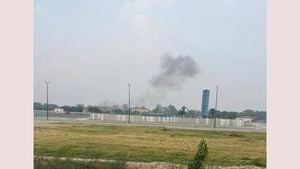In Alaska, a significant shift in demographic forecasts has emerged, pointing towards a projected population decline in the coming decades. For years, state officials from the Alaska Department of Labor and Workforce Development have anticipated considerable growth in the state's population; however, new predictions indicate a marked reversal of those expectations, forecasting a decline by 2050. This marks an unusual turn for a state that has prided itself on its reputation for growth and abundant opportunities, particularly in its vast, untamed wilderness.
The recent forecast suggests that Alaska's overall population will shrink by approximately 14,000 residents, or about 2%, decreasing from around 736,800 to an estimated 722,800 by the year 2050. State Demographer David Howell attributes this anticipated decline to a complex interplay of factors including a sustained period of outmigration, increasing death rates, and declining birth rates. Notably, the state has experienced negative net migration for eleven consecutive years, indicating that more residents have been leaving than entering.
This demographic change has raised concerns among urban planners and policymakers who rely on accurate population data to anticipate and manage the demands for schools, infrastructure, transportation, and essential services. Howell explained, "We’ve now had 11 straight years of negative net migration. Our natural increase—births minus deaths—can’t compensate for the losses in net migration once we get about 10 years out in the projected period." As birth rates continue to drop amid an aging population and a predominantly young, mobile demographic who are more prone to relocate, the state's demographic makeup is set for notable shifts. By the mid-2030s, Alaska’s Baby Boomer population is expected to experience significant aging, exacerbating the issue of population decline through increasing mortality.
Notably, the varying impacts of this population decline will not be felt evenly across Alaska. While some regions, like Southwest Alaska, still maintain higher birth rates that outstrip outmigration and deaths, areas like Southeast Alaska are expected to experience greater losses. For instance, communities in this region are projected to bear the brunt of these shifts, with Wrangell, currently around 2,000 residents, expected to dwindle to below 1,400.
Moreover, the new forecast indicates a demographic transformation where the proportion of Alaska Natives within the population will increase from about 22% to 25%. This change is due, in part, to the fact that Alaska Natives typically leave the state less frequently compared to their white counterparts, and an estimated 131% increase in the population of Alaska Natives over 65 is anticipated by 2050.
As the state braces for these changes, experts also caution that the future is not entirely predetermined. The forecast hinges on existing trends, which can always be disrupted by unforeseen developments, such as an economic upturn fueled by a new oil boom or the influx of climate-change refugees. Howell noted that unforeseen migration trends could alter projections significantly, but current trajectories suggest a lean towards decline.
Digging deeper into these projections, it's revealed that the Interior region of Alaska could be among the hardest hit. A report indicates its population may decrease by approximately 7,300 individuals, a staggering 6.6% drop from roughly 109,800 to about 102,500 by 2050. Most of this decline is attributed to the Fairbanks North Star Borough, where demographic shifts in a younger military and academic populace may prevalence greater mobility and migration out of the area.
Historic growth attributed to projects at Eielson Air Force Base, which began hosting F-35s in 2016, saw a surge of active-duty personnel and their families moving to the region. However, Howell suggests that many of those low-seniority residents are more susceptible to moving again, as they are newer to the area and in pursuit of broader opportunities elsewhere. As migration trends evolve, the character of Fairbanks will inevitably shift, confronting both challenges and potential adaptations in its housing and services infrastructure.
Accurately interpreting demographic changes becomes paramount as communities across Alaska prepare for new realities. Local experts, such as Research Architect Aaron Cooke, emphasize the pressing need to address housing shortages in the Fairbanks North Star Borough. Areas are noted to be about 4,000 housing units short of current needs, presenting a community challenge that complicates existing pressures from declining population and worker shortages.
These shifts in demographics are not just statistics; they carry profound implications for social structures, economies, and the cultural landscape of Alaska. As the state transitions into this uncertain demographic future, the ability of communities and policymakers to respond effectively will determine Alaska's ability to adapt and perhaps thrive, even amid change.
The larger narrative about Alaska's future continues to gain attention, yet the crucial question remains: Will Alaska be able to find new pathways that not only stabilize but stimulate growth amid changing demographics? Planning, adaptability, and perhaps even innovation may hold the keys to ensuring that the Land of the Midnight Sun continues to shine brightly into the future.



